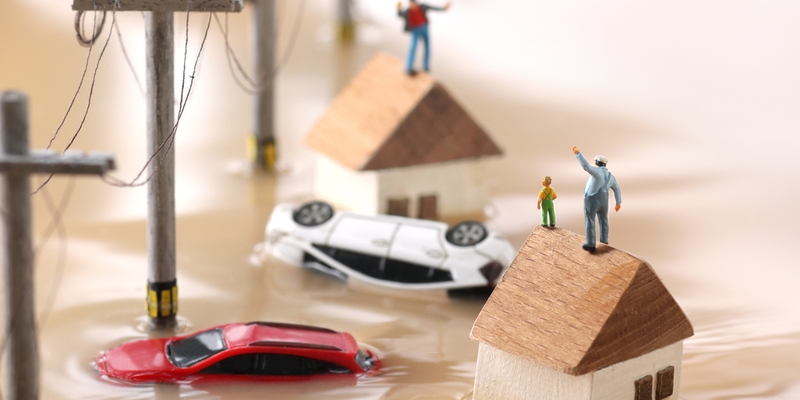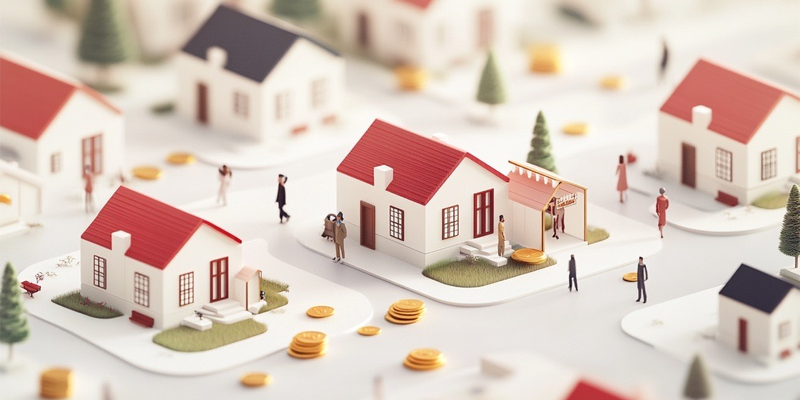
If you are not redirected within 30 seconds, please click here to continue.
Samedi: 10h – 16h HAE

If you are not redirected within 30 seconds, please click here to continue.
If you are not redirected within 30 seconds, please click here to continue.
One third of homeowners aren’t sure if they’re adequately covered against extreme weather – but that number may be higher

Table of Contents
Between the floods in Nova Scotia and the forest fires sweeping across the pacific northwest, summer 2023 has been a banner year for climate disasters in Canada. And with each summer expected to be worse than the last, even homeowners who are not living in areas of greater risk of flooding or fire may be worried about how their homes might fare in the event of an unforeseen disaster.
A recent study conducted by RATESDOTCA and Leger found that 14% of all insured homeowners contacted their insurance provider in the past few months to review their insurance coverages to make sure they were adequately covered, and 4% of those who did added endorsements to cover extreme weather.
Of the rest — homeowners who did not reach out to their insurance provider — nearly half (48%) did not reach out to their insurance provider as they felt adequately covered by their existing policy. Perhaps most disconcertingly, a full third (33%) of overall respondents did not reach out to their provider, and were unsure if they were adequately covered.
Younger people twice more likely to inquire about potential climate risks
The stats above reflect the actions and intentions of overall insured homeowners. But a closer look reveals that 28% of homeowners between the ages of 18 and 34 reached out to their insurance providers to make sure they were adequately covered, and 8% of whom took out further endorsements related to extreme weather events. These may include endorsements like sewer back-up insurance, overland flooding insurance, and others.
That’s twice as many as the 14% of overall homeowners who reached out, and the 4% of homeowners who got new endorsements. Of all age groups, people 55 years of age and older were least likely to inquire or to add on additional endorsements related to climate change.
This doesn’t particularly surprise Blair Feltmate, head of the Intact Centre for Climate Adaptation at University of Waterloo.
“It may well be that older people haven’t been conditioned over the course of their lifetimes to worry about climate change or extreme weather events, perhaps other than over the last five years or so,” he says. “Whereas younger people who are coming into the market new, during their entire adult lifetimes, climate change extreme weather events have led the news and probably all their discussions at school or university.”
New homeowners, too, are likely be proactive about protecting their homes from extreme weather events. Seventeen per cent of insured homeowners who purchased their homes less than two years ago reached out to their insurance providers to make sure they were adequately protected and 11% took out additional endorsements.
48% felt adequately covered and did not reach out to their insurance providers
When it comes to available endorsements to protect your home from extreme weather events, most insurance companies look to two in particular: Sewer backup and overland flooding insurance.
Neither endorsement typically appears on a standard insurance plan, but both are necessary for any home in areas under threat of flooding. And, while most obviously those could be in coastal areas that get a lot of rain fall, basement flooding and localized inland flooding are now covering more parts of the country and leading to more claims. And more claims lead to higher insurance rates — towns in the Windsor-Essex region, which typically see high amounts of water damage from the bordering Detroit River, also have among the highest insurance premiums in Canada, according to the RATESDOTCA Insuramapp.
The survey found that 48% of homeowners did not bother reaching out to their home insurance provider as they felt they were already adequately covered, but Feltmate questions those responses.
“The half may think they’re covered, but they really don’t know,” he says. “When people say they’re covered, they may be well intentioned, but I’m not sure how cognizant they are of the difference between a pipe burst in the house, versus water creeping into the foundation versus overland flooding versus sewer back-up.”
While a burst pipe will likely be covered by a standard policy, instances where the water is coming from outside will not be.
‘If you own a home where it rains, you’re subject to flooding’
Flooding looks different all over the country, and floodplain maps change each year. While most people tend to think of flooding as large catastrophic events that submerge full communities — like the floods in Nova Scotia earlier this summer — most flood claims result from heavier-than-normal downpours, especially when they meet outdated or untested sewer systems.
“Overland flooding can be small and it can be local, even due to heavy rain on an area that you might assume isn't vulnerable to flooding because your neighborhood is on top of a hill,” says Stefan Tirschler, director product and underwriting at Square One Insurance Services.
Sewer backups are another unsavoury result of extreme rain — and not only do they contribute to higher floods in the home, they can occur almost anywhere. For example, older areas that are seeing more densification, or even new developments can see higher rates of sewer backup.
“The storm water and the wastewater actually combine into a single system; a system which may not have the capacity to handle the total volume that they’re receiving at once,” says Tirschler.
Feltmate puts it more bluntly: “If you own a home where it rains, you’re subject to flooding.”
Related: How is climate change affecting home insurance premiums?
Fire, on the other hand, is fire
While rainfall, coastal flooding and sewer backup may require separate additional endorsements, it may come as small relief to anyone who has been unwittingly caught in wildfire zones that fire insurance, actually, is pretty simple.
“Fire is fire,” says Tirschler. “It doesn’t matter whether it started in your toaster oven or if it started in the neighbor's BBQ, or if it started in the wilderness and made its way into town and consumed your house.”
In fact, to his knowledge, there isn’t a single endorsement that someone needs to purchase to be protected from wildfire. Instead, it’s typically one of the foundational covered perils in a home insurance policy. Smoke damage is also usually included by default. However, Tirschler cautions, it’s never a bad idea to look over your policy at least once a year to make sure it’s included.
Prevention starts at home
When it comes to properly securing a home against the risks of extreme weather damage, having the proper coverage is key. But even beyond that, Feltmate says, there are many measures people could be taking to minimize the damage in the first place.
“Putting the high-risk insurance pool together doesn’t change the fact that your basement’s going to flood,” he says. “It just gives you a mechanism to pay for it after the fact.”
His team is hard at work educating homeowners across the country on simple preparedness measures to make sure that flood damage and fires can be avoided in the first place. Making sure any water run-off is directed away from your home’s foundation, clearing debris from any storm drains and eavestroughs and other preventative measures can go a long way towards keeping the inside of your home dry when the rains come.
When it comes to fire prevention, Feltmate suggests having a metal roof or asphalt-cement shingles so any embers that fall on your house don’t ignite. Keep mulch, shrubbery, or other burnable material far from your home. Make sure your back patio and cladding around your house is fireproof.
“If you do it right, you’re never going to even see your insurance provider,” he adds.
And if you do need to see your insurance provider, make sure your policy and contact information of your insurance provider are stashed somewhere safe and accessible, whether it’s in your emergency preparedness kit (or Go bag) or on a high shelf in a dry spot in your home.
What to do when disaster strikes
The fact is, not everyone is going to get adequate coverage against the threat of wildfire and flooding all the time, depending on where they live. According to the IBC, up to 10% of homes in Canada are uninsurable – meaning that the risk is so high that very few insurance companies would be able to write a premium that is affordable to the customer.
Meanwhile, coastal flooding insurance for saltwater (the kind that comes off the ocean in the form of tsunamis or storm surges) are only available from a small handful of insurance companies.
Currently, the IBC is working with the Canadian government on a National Flood Insurance Program to offer coverage to homes who are caught in this situation — it remains the last G7 country not to have a plan in place.
Suffice it to say, the options are much more limited for homeowners most vulnerable to extreme flooding.
However, Tirschler encourages even high-risk homeowners to shop different insurance providers to see if they can be covered for overland flooding.
“Each insurance provider still has their own risk appetite and may be working from a different or more recently updated set of flood maps,” he says. “One might allow for coverage in areas where another company doesn't.”
Don't waste time calling around for home insurance
Use RATESDOTCA to shop around and compare multiple quotes at the same time.
Finding the best home insurance coverage has never been so easy!
Get money-saving tips in your inbox.
Stay on top of personal finance tips from our money experts!









